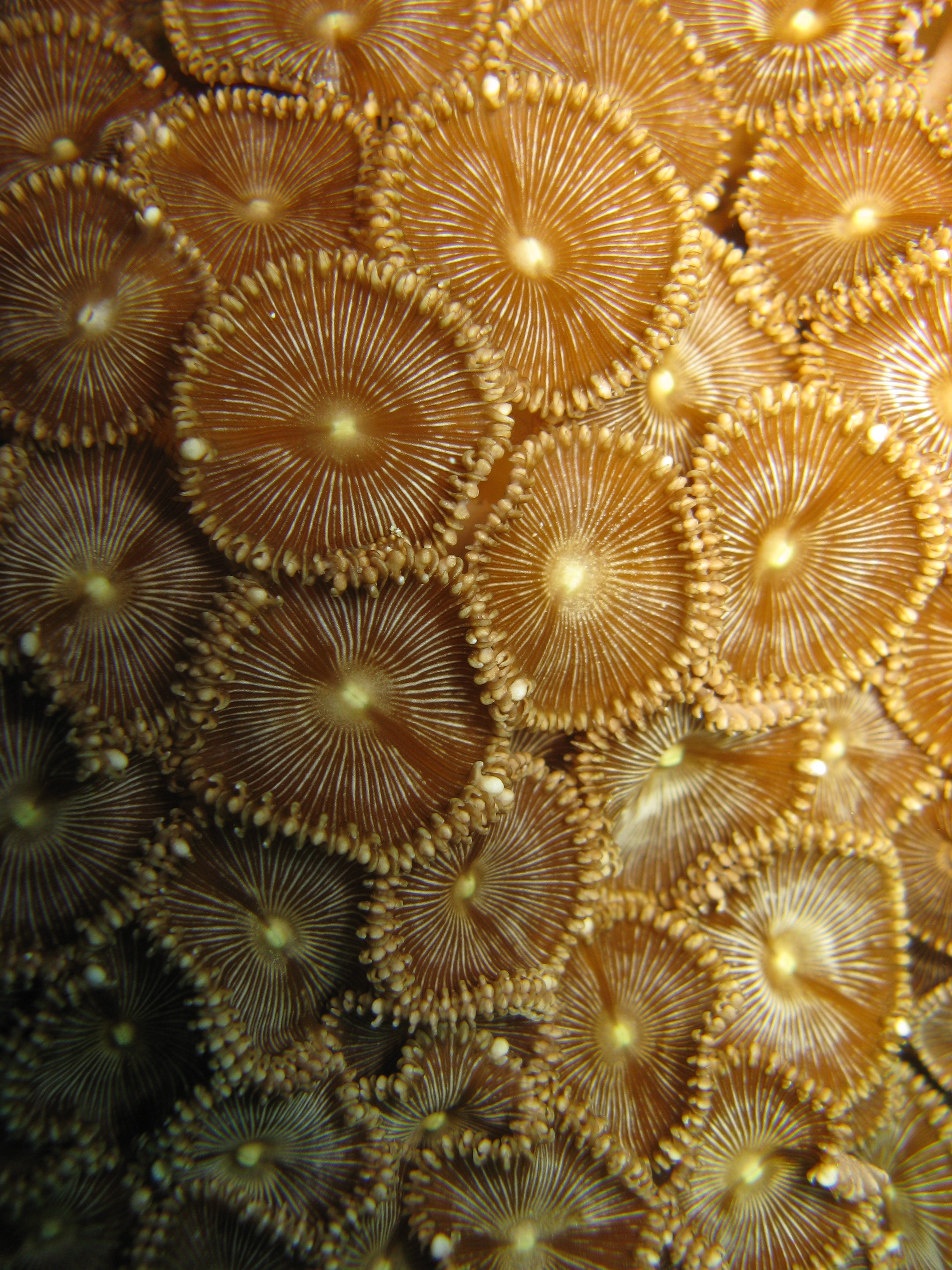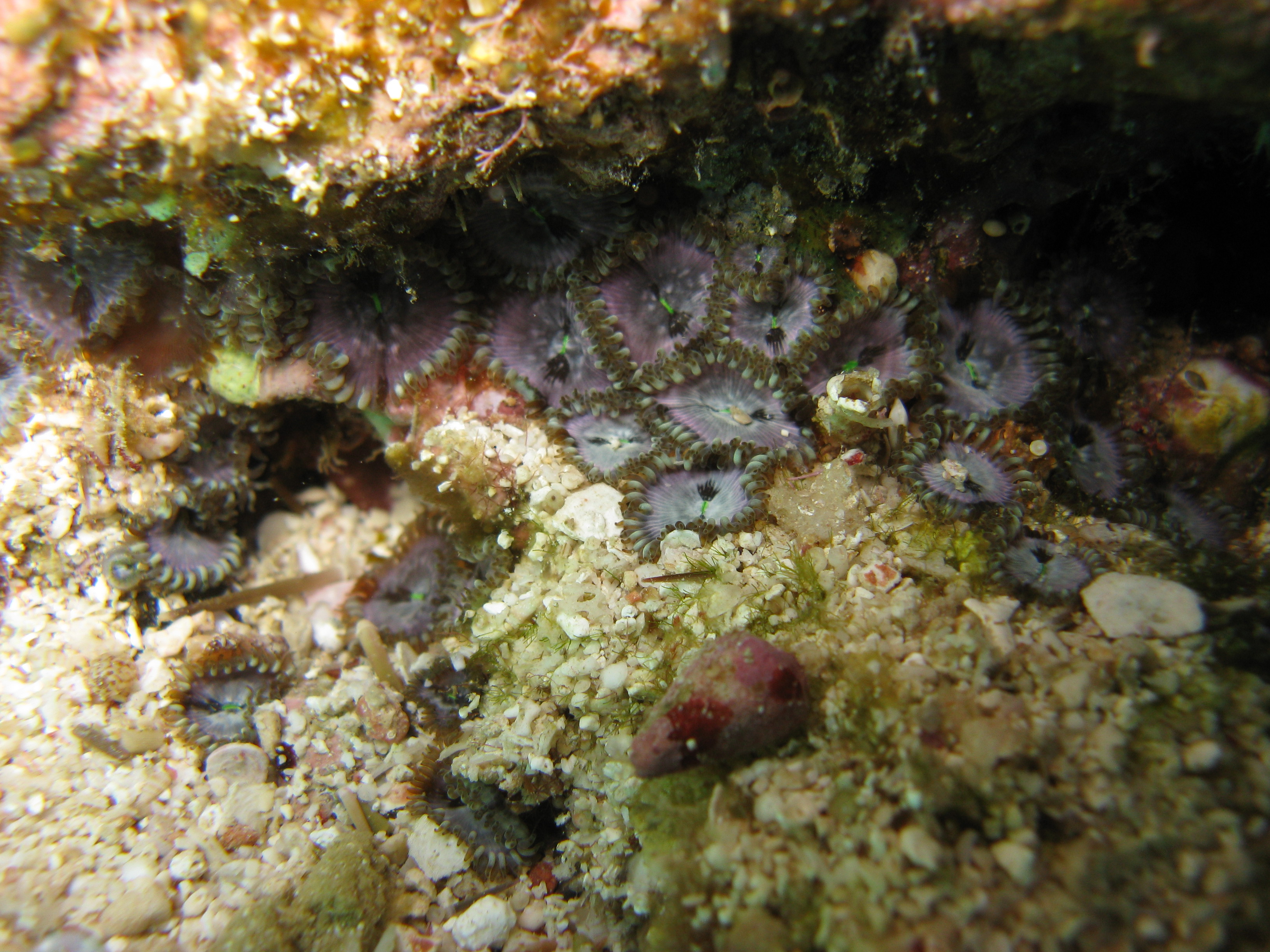|
James Davis Reimer on Zoanthids
Whats New with Zoanthids?
 |
| Palythoa heliodiscus) photographed off Okinawa, Japan by Dr. Reimer |
Dr. James Davis Reimer is an associate professor at the University of the Ryukyus in Japan, where his lab, MISE (Molecular Invertebrate Systematics & Ecology), works extensively with zoanthids. He is also a researcher with the Japan Agency for Marine-Earth Science and Technology (JAMSTEC). Dr. Reimer recently took some time to chat with Blue Zoo News about the science behind zoanthids and to answer some of our questions.
BZN: Thank you for agreeing to take time out of your busy schedule to help us better understand zoanthids. When and where did you see your first zoanthid? Was it love at first sight?
JDR:I think it was 1999 or 2000. I was in my first year of my master's at Kagoshima University in Japan. I wanted to work on zooxanthellae in soft corals, and was having a very hard time keeping them happy in the tanks we had. My collaborator, Dr. Shusuke Ono (who was also in the same lab as me), had mentioned "sunaginchaku" would be a good thing to work on, as they were resilient and zooxanthellate. So, we went over to the Sakurajima dive site by ferry from the city (we have used this site a lot for research), and he pulled some Zoanthus out of the intertidal zone.
More than love at first site, it was "What are those things?"! The polyps were all closed, and purple and even a bit slimy looking…
BZN: What is your background?
JDR: I was born in British Columbia, Canada to American parents. I went to university in BC and then moved to Japan in 1995 to teach English. I went back to grad school in1999 at Kagoshima University in Japan and graduated with a PhD in 2004 on the same day as I got married and turned 30! I then worked as a post-doc at JAMSTEC from 2004-2006, then at Biological Institute on Kuroshio in Kochi, Japan during 2006 and 2007. Most recently, I was hired as an assistant professor at the University of the Ryukyus in Okinawa, Japan last year. Our daughter came along later last year.
BZN: In layman's terms, what is the difference between brachycnemic and macrocnemic, and why is this distinction important when talking about zoanthids?
JDR: Good question—although I suspect the answer really isn't in "layman's terms"!
Brachycneminic means the fifth mesentery from the dorsal directive is incomplete and does not reach all the way to the pharynx (brachy means “short” in Latin). Macrocneminic (macro for “long”) means the mesentery is complete and reaching the pharynx. Whew. Now that that is explained, I will explain what this means for taxonomy.
The order Zoanthaira has two suborders based on brachycnemic and macrocnemic conditions—they are Brachycnemina and Macrocnemina.
Brachycnemina includes two families: Sphenopidae and Zoanthidae. Sphenopidae includes the genera Palythoa and Sphenopus, while Zoanthidae includes Zoanthus, Isaurus, and Acrozoanthus. Macrocnemina includes two families, Epizoanthidae and Parazoanthidae.
 |
| Reimer’s Lab is Called MISE—Molecular Invertebrate Systematics & Ecology, |
BZN: Ok, so is the difference between brachycnemic and macrocnemic visible to the naked eye on a live specimen or not?
JDR: Yes and no. If you can tell your Epizoanthidae and Parazoanthidae apart from Palythoa and Zoanthus (not that tough) then you can tell apart brachycnemic and macrocnemic zoanthids. But if you want to look at mesenteries and internal arrangement, you need at least a dissecting scope.
BZN: What is the current state of zoanthid taxonomy like, and how many genera are there in the Family Zoanthidae?
JDR: In addition to what we have already discussed, there are two more genera within Sphenopidae, and Protopalythoa is actually just Palythoa.
Epizoanthidae includes the genus Epizoanthus, while Parazoanthidae includes Parazoanthus, Savalia, and Corallizoanthus.
There is one more deep-sea family, Abyssoanthidae, not currently placed in either suborder.
As to the current state of zoanthid taxonomy, it is a mess, but a few researchers like me are working on revising things. We actually know what we want to do, and how all the species are related. But, revisions take time, and as lots of our data are molecular, we have to convince the more traditional elements our work is valid. That said, morphology is important for any description. We hope to have things more well-ordered soon.
BZN: There has obviously been a lot of confusion in the past regarding taxonomy, and it only gets worse when you add the additional nomenclature of the aquarium hobby. Are marine aquarists stuck with describing zoanthids by their color morphs and point of collection (e.g. Hallowean Jarkata zoanthids) rather than being able to be more specific in terms of species?
JDR: Well, I think there are two systems at work here. Scientific names are the most exact, but they do not account for morphotypes. From what I have seen, aquarists like unusual color morphs, so I think it very likely one color morph of a species would be valued much more than another. So, for aquarists, their system may be better fitted to their purpose. Certainly for marketing it sounds better. But, as a scientist, no way I could ever use these names!
 |
| Zoanthus gigantus, Okinawa, Japan |
BZN: Yes, you are right. Our experience has been that the unusual color morphs are the most sought after by aquarists. What is the environmental or ecological purpose of the wide array of zoanthid color morphs?
JDR: No one knows—same as coral. It could be advertising "don't eat me, I taste bad/am poisonous", it could be protecting zooxanthellae within zoanthids, or well.... hmmm...
BZN: What about growth forms? For example, we frequently see zoanthids from Solomon grow close to the rock while ones from Jakarta and Fiji grow with long stalks. Is it a species difference or are there environmental factors involved?
JDR: I would say it is likely zoanthids from all three locations come in all shapes and sizes. Polyp shape is very likely heavily influenced by water flow and current (check some early works by Karlson perhaps), so it may be your Solomon suppliers are going to a high-flow collecting site, while at Jakarta and Fiji suppliers are getting zoanthids from "low-flow" sites.
BZN: What is palytoxin, and why should aquarists who keep zoanthids be aware of it?
JDR: Palytoxin (PTX) is a nasty, very strong, natural poison found in Palythoa spp. and associated animals (parrotfish, xanthid crabs, etc). For a really poisonous colony, one gram of Palythoa can kill up to 600 mice! We don't yet know if Palythoa produces PTX, or something else, and no one knows exactly how PTX appears. Some colonies have PTX, while adjacent colonies of the same species do not. My advice is be very careful dealing with Palythoa of any kind, just to be safe. Gloves, goggles, and no eating (haha)! FYI, deaths from PTX poisoning occur every year, mainly from contaminated parrotfish or crab meat. Death is slow and painful; symptoms often do not appear for two or three days. Be safe!
BZN: So palytoxin is only a risk with Palythoa spp. (including Protopalythoa)?
JDR: As far as we know, but you never know about other genera. I would bet there are all sorts of unidentified poisons and chemicals in zoanthids.
BZN: So often you hear people say that you don't need to target feed zoanthids, but many do exhibit a feeding response when food is in the water. How much do zoanthids really rely on planktavoric food?
JDR: This is a species to species question, and we have little concrete data. I would say some Palythoa spp. rely less on their zooxanthellae than Zoanthus spp., but this is a case by case situation. Sorry we don't have more answers. If you want to study this, come join my lab!
BZN: Are there any species of zoanthids that are in trouble in terms of species survivability?
JDR: Again, there is almost no information, but no zoanthids that I know of are in trouble.
BZN: If a beginning aquarist is just starting a reef tank, and they want to keep zoanthids, what advice would you give them in terms of environmental conditions and genus/species selection?
JDR: Well, I am not an aquarist, but my advice is stay away from Palythoa spp. (including Protopalythoa) due to the potential danger, and stick with Zoanthus. Within Zoanthus there are some species that are relatively adaptable (Z. sansibaricus), some more finicky (Z. kuroshio), and some in between (Z. gigantus, Z. vietnamensis). Each species and colony will have a light level they prefer, so be mindful of this. Sorry for the lack of detail, but I imagine there is lots of information in books. Fossa and Nilsen is a nice start.
 |
| James Davis Reimer isn’t always the serious scientist. |
BZN: Do you keep an aquarium in the lab? If so, how is it set-up and what animals do you keep?
JDR:We have some tanks in our lab. We have three 60 liter tanks—one for deep specimens with blue lights, one for reef specimens (well-lit), and one for sandy area specimens (currently just natural light from the window). All three tanks are hooked up to one large skimmer. My students and Dr. Frederic Sinniger (the post-doc in our lab) keep things they find interesting in there. Often we keep specimens in tanks to get good photographs of their open oral disks, and then pickle them in ethanol for DNA work or as museum specimens. I think right now we have Parazoanthus, Epizoanthus, Palythoa, Zoanthus, and a few unidentified species in there. The tanks were set up at the urging of Fred who is doing research in our lab, and they have really been great for getting our students interested in zoanthids and familiar with the species.
BZN: What is one incredibly cool fact about zoanthids that our readers may not know?
JDR: Wow - only one?? Hmmm... Well, how about the fact that we found some zoanthids last year 5600 meters down in the Japan Trench while using a manned submersible? Is that cool…in a Life Aquatic way?
BZN: If advanced aquarists who specialize in keeping zoanthids want to contribute to the available body of information on zoanthids, is there any way they can?
JDR: Absolutely! If they can send us close-up photos of open polyps (so we can count tentacles etc) and closed polyps (to examine outer polyp surface) this can help. But... all photos have to be from specimens from the field (not aquariums) with known collection localities. The reason is "captive" zoanthids may change their morphology -color, polyp shape, and tentacle length etc. in tanks. We need in situ (natural) information for things to be scientifically useful and valid! If we find something really unusual, people are always welcome to send us samples preserved in 70% or higher ethanol. We will do our best to try to ID interesting samples!
BZN:Well we will definitely pass that along. Thank you so much for taking the time to chat with Blue Zoo News about zoanthids and your experiences. Please feel free to be in touch at any point in the future if you have cool new information to share. Until then, good luck with your research—we’ll be eagerly awaiting a far more organized zoanthid taxonomy.
Published 1 July 2008. © Blue Zoo Aquatics
|